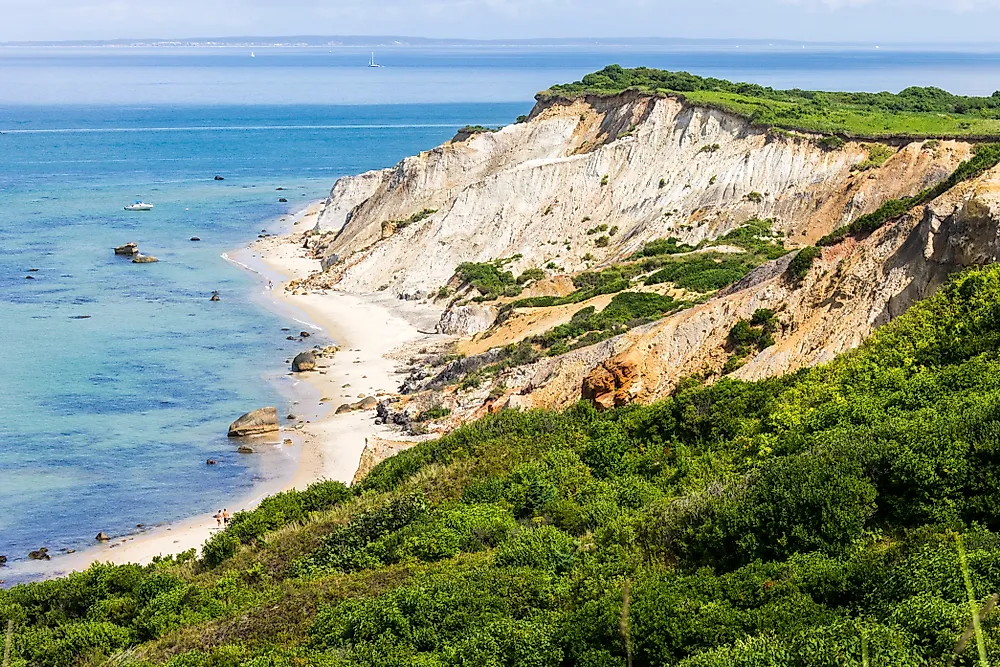The 11 National Natural Landmarks of Massachusetts

The United States National Natural Landmarks (NNL) is a program that identifies and encourages the management, conservation, and rehabilitation of natural history in the US. The program identifies the geological and biological features in private and public ownership. The main aim of the program is to encourage and support individual and organization efforts in preserving sites that illustrate the ecological and geological history of the country. The program also seeks to encourage the public to appreciate natural heritage. There are 599 national natural landmarks in the country spread across 48 states, and the territories of Virgin Islands, Puerto Rico, Guam, and American Samoa. Delaware and Louisiana are the only states without a national natural landmark. The federal, state, county, or municipal governments manage about one-half of the landmark sites. One-third is privately owned while the rest is owned and managed by a public-private cooperation. A site qualifies as NNL because it contains the remnants of specific geological, ecological, or biological features. There are all 11 NNLs in Massachusetts including Bartholomew’s Cobble that extends to the state of Connecticut. The eleven sites range between 20-5,000 acres. The following are the NNLs of Massachusetts.
National Natural Landmarks in Massachusetts
Acushnet Cedar Swamp
The Acushnet Cedar Swamp was designated an NNL in 1972. It covers an area of 1,800 acres. The swamp is among the most extensive wetlands in the state. A compact cluster of Atlantic white cedar that makes the swamp impenetrable. The canopy prevents evaporation from occurring on the ground level allowing ponds and bogs to form. The swamp is a state-owned NNL.
Bartholomew's Cobble
Bartholomew's Cobble was designated in October 1971 as the first NNL in Massachusetts. The cobble covers an area of 167 acres and consists of the largest concentration of ferns in the United States. The NNL provides a habitat for several species of animals, birds, and insects including the largest concentration of bobolink bird in the state. The Trustees of Reservations own it.
Muskeget Island
Muskeget Island is a sandy island that marks the maximum point of the glacial ice sheet in the northeastern coast during the last ice age. The island is the southernmost breeding habitat for the grey seals. The more than 2,000 seal pups born on the island annually have made the shores of the island a feeding ground for the great white sharks. The island also provides a habitat for the Muskeget vole which is a native species. The island was designated an NNL in April 1980.
Designation of the NNLs
The eleven NNls in Massachusetts were designated between October 1971 and April 1980. Bartholomew's Cobble was the first NNL to be designated while Muskeget Island and Cold River Virgin Forest were the last two in April 1980. The North and South Rivers is the only landmark owned in cooperation between the state, municipal, and private investors.
The 11 National Natural Landmarks of Massachusetts
| Rank | Name | Date | County | Ownership |
|---|---|---|---|---|
| 1 | Acushnet Cedar Swamp | 1972 | Bristol | state |
| 2 | Bartholomew's Cobble | 1971 | Berkshire | private |
| 3 | Cold River Virgin Forest | 1980 | Berkshire, Franklin | state |
| 4 | Fannie Stebbins Refuge | 1972 | Hampden | municipal |
| 5 | Gay Head Cliffs | 1975 | Dukes | native lands |
| 6 | Hawley Bog | 1974 | Franklin | private |
| 7 | Mt. Greylock Old Growth Spruce | 1987 | Berkshire | state |
| 8 | Muskeget Island | 1980 | Nantucket | municipal, private |
| 9 | North and South Rivers | 1977 | Plymouth | state, municipal, private |
| 10 | Poutwater Pond | 1972 | Worcester | state |
| 11 | Reedy Meadow was Lynnfield Marsh | 1972 | Essex | municipal |











